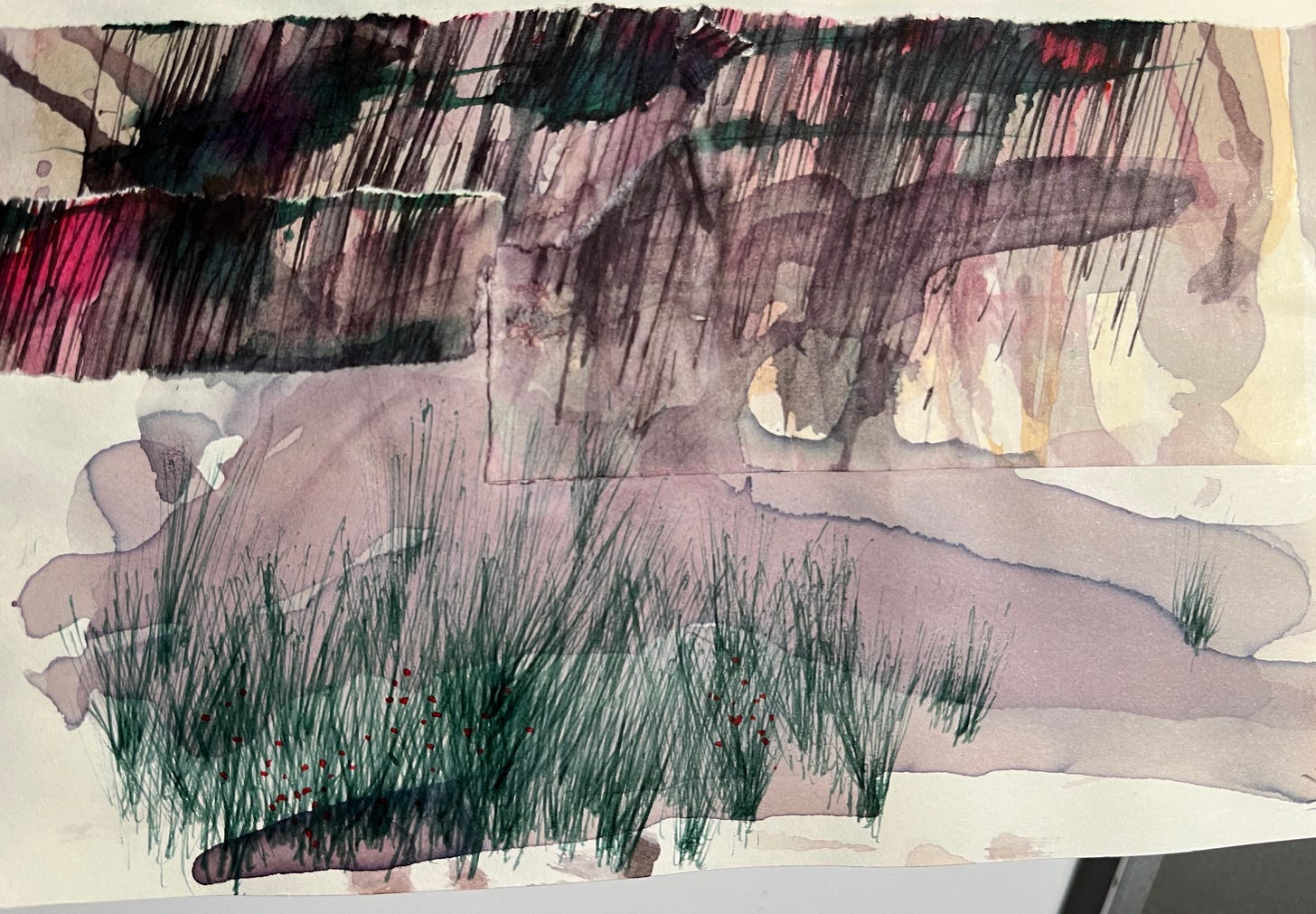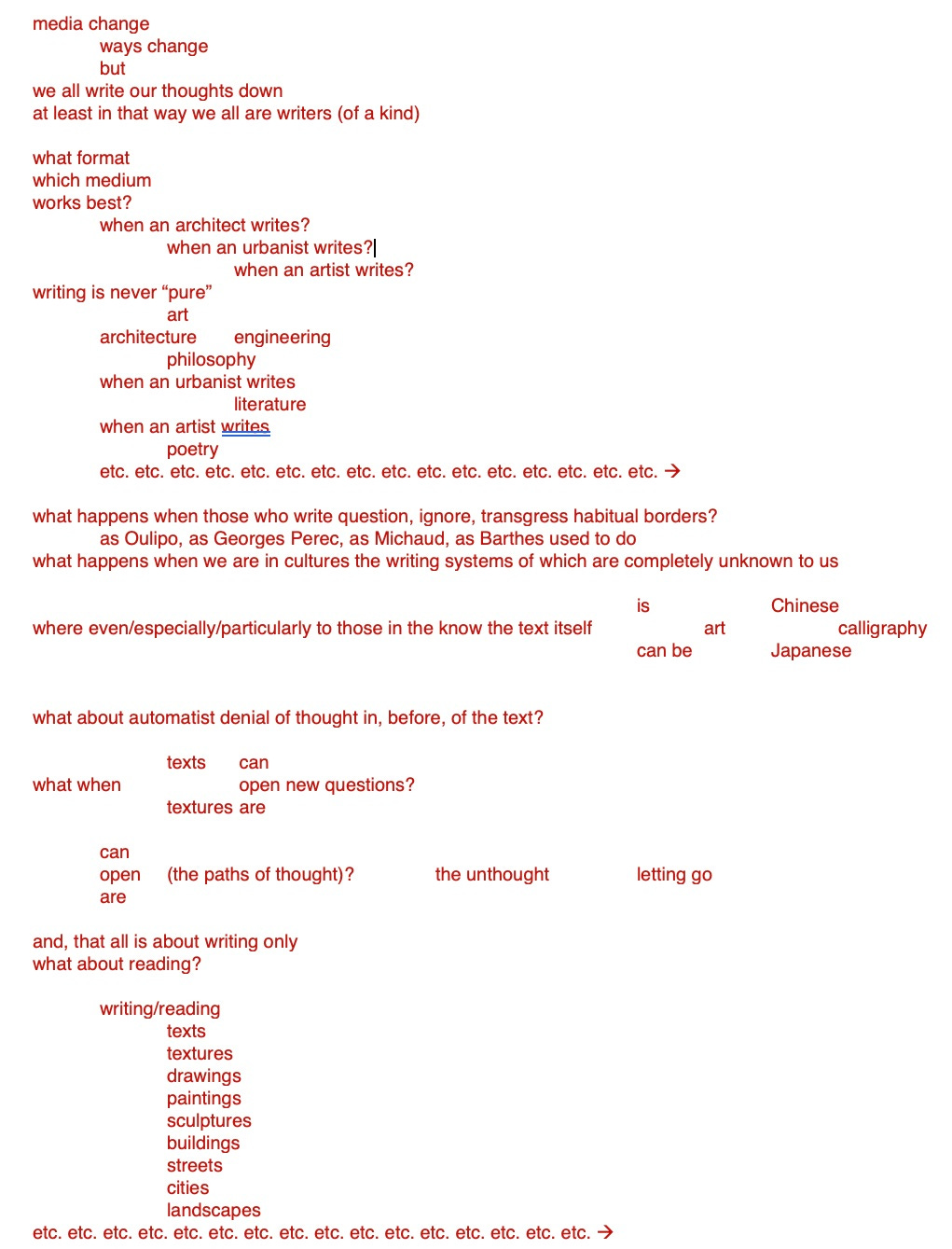I have decided to join Substack because I have found it promising, “a writing platform that allows writers to ...” etc., etc.. A writing platform ... Writers ... I have joined it with a question – what writing is, to me, to us who are variously interested and variously involved in the production of space? What writing is to us, who are not writers. My early urbophilia posts have touched that issue from various angles, of relevance but not necessarily belonging to our field(s). Now we continue, in a new, urbophilia way.
words and lines
texts and drawings
offered to others to read, to inhabit, to (mis)understand, (mis)appropriate
composers write symphonies
we write spaces and help enable spatial practices
THUS ...
* architects, urbanists help imagine and navigate the production of space
we imagine, we visualise and communicate, we sell what does not exist,
our métier is to sell what is yet to be conceptualised, concretised, resolved, then built, inhabited, appropriated, lived
we dream and we sell dreams
our clients buy their own futures that we (in best cases, co-) imagine
we draw rooms apartments, houses, offices, buildings, streets and piazzas, parks, as (if) inhabited, as if lived
we visualize them as glimpses, as the stories of lives, desirable dreams yet to come true
we start by getting trained to convince clients in possibility of such, better lives, of (their) dreams coming true
and, we sometimes succeed
in order to have a chance, we need to communicate our ideas convincingly
in order to do that, we sketch, we draw, make models
such representations (of future) are – the forms of writing
** linguistics define writing as conventional system of marks or signs that represents the utterances of a language
writing communicates meaning
our drawings and models are texts, text(ure)s that communicates meaning
our drawings are a form of storytelling
we are – storytellers
*** over the last several decades, high tech has entered all aspects of our lives, including the production of space
architectural drawing practices were very much conquered by the convenience and efficiency of technical tools
but, most often ideas still emerge via free-hand sketching, intimate doodles or shared visual discussions
conversations over the sheet of paper and a pen, pencil, bros in hand
when we, professionally deformed designers and planners sit to discuss spatial futures – we draw
**** open singularities offer plurality of readings, as in Eco’s opera aperta
such texts do not restrict but, to the contrary, they open ideas, invite thought, problematise and elevate discourse
they bring us where one cannot reach without a pencil (assisted, made more efficient by a keyboard and mouse)
***** there is intuition of the hand, a line as fast and sharp as only the thoughts can be
those who excel in sports attest the ability of body to decide, to move
our bodies think, as in Pallasmaa’s thinking hand, in his eyes of the skin (two enriching, inspirational formulations)
those, in all sorts of ways, intersect with Bachelard, and others
our visual monologues, dialogues, multilogues let the brain mark traces, produce drawings
****** with a single (thoughtful or a thoughtless) line, the unrestrained brain-hand brings us ... beyond
NOW … back to sketchy notes from several days ago ... 13 May 2024
(sketchy notes ... ) BUT, from here, alas ... Substack’s formatting (based on expectations that writers write, without desire to disturb the text (in order to affect the meaning) falls short. I have to insert the screenshot of the next segment, the layout of which was designed to communicate stuttering, dilemmas, pauses in a visual way, in the way which architect, urbanist, spatial thinker and their ideas need. Please have a look ... if this does not work, I will ty again to , in Beckett’s way, at least fail a bit better.)
DOES THIS WORK? can you see this text well enough? please let me know











